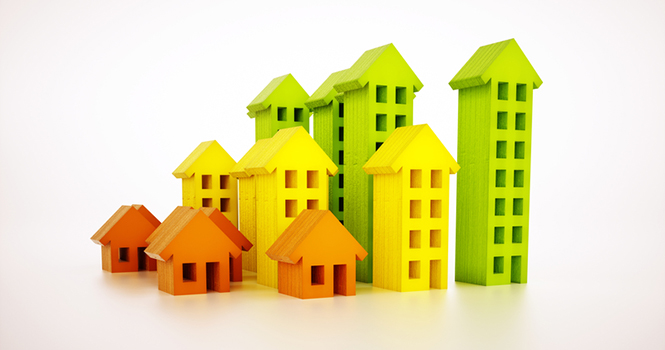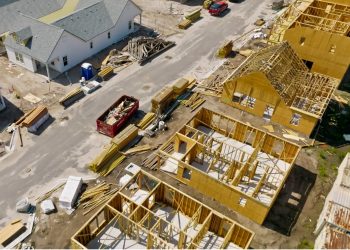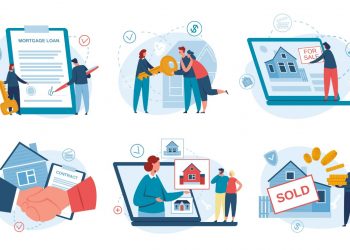Home prices maintained their robust, upward trajectory in a vast majority of metro areas during the second quarter, causing affordability to slightly decline despite mortgage rates hovering at lows not seen in over three years, according to the latest quarterly report by the National Association of REALTORS. The report also revealed that for the first time ever, a metro area – San Jose, California – had a median single-family home price above $1 million.
The median existing single-family home price increased in 83 percent of measured markets, with 148 out of 178 metropolitan statistical areas (MSAs) showing gains based on closed sales in the second quarter compared with the second quarter of 2015. Twenty-nine areas (16 percent) recorded lower median prices from a year earlier.
There were slightly fewer rising markets in the second quarter compared to the first three months of this year, when price gains were recorded in 87 percent of metro areas. Twenty-five metro areas in the second quarter (14 percent) experienced double-digit increases – a small decrease from the 28 metro areas in the first quarter. A year ago, 34 metro areas (19 percent) experienced double-digit price gains.
Lawrence Yun, NAR chief economist, says a faster pace of home sales amidst languishing inventory levels pushed home prices higher in most metro areas during the second quarter. “Steadily improving local job markets and mortgage rates teetering close to all-time lows brought buyers out in force in many large and middle-tier cities,” he says. “However, with homebuilding activity still failing to keep up with demand and not enough current homeowners putting their home up for sale, prices continued their strong ascent – and in many markets at a rate well above income growth.”
The national median existing single-family home price in the second quarter was $240,700, up 4.9 percent from the second quarter of 2015 ($229,400), which was previously the peak quarterly median sales price. The median price during the first quarter of this year increased 6.1 percent from the first quarter of 2015.
Total existing-home sales,including single family and condos, rose 3.8 percent to a seasonally adjusted annual rate of 5.50 million in the second quarter from 5.30 million in the first quarter of this year, and are 4.2 percent higher than the 5.28 million pace during the second quarter of 2015.
“Primarily from repeat buyers moving up or trading down, existing sales increased each month last quarter and could’ve been even higher if not for a few speedbumps,” explains Yun. “Closings were slowed a bit by meager supply levels and home prices in many areas that are still rising too fast.”
At the end of the second quarter, there were 2.12 million existing homes available for sale, which was below the 2.25 million homes for sale at the end of the second quarter in 2015. The average supply during the second quarter was 4.7 months – down from 5.1 months a year ago.
According to Yun, without enough new construction being built, existing inventory seriously failed to keep up with the growing demand for buying. As a result, homes typically stayed on the market for around a month throughout the second quarter, and over 40 percent of listings sold at or above list price, with June being the highest share since NAR began tracking in December 2012 (43 percent).
“Many listings in a majority of markets – and especially those in lower price ranges – had multiple offers and went under contract quickly because of severely inadequate supply,” adds Yun. “This in turn dented affordability and without a doubt priced out a segment of buyers attempting to seek relief from fast-growing rents.”
Despite falling mortgage rates and a small increase in the national family median income ($68,774), swiftly rising home prices caused affordability to decline in the second quarter compared to a year ago. To purchase a single-family home at the national median price, a buyer making a 5 percent down payment would need an income of $52,255, a 10 percent down payment would require an income of $49,504, and $44,004 would be needed for a 20 percent down payment.
The five most expensive housing markets in the second quarter were the San Jose, California, metro area, where the median existing single-family price was $1,085,000; San Francisco, $885,600; Anaheim-Santa Ana, California, $742,200; urban Honolulu, $725,200; and San Diego, $589,900.
The five lowest-cost metro areas in the second quarter were Youngstown-Warren-Boardman, Ohio, $85,400; Cumberland, Maryland, $94,900; Decatur, Illinois, $95,600; Binghamton, New York, $105,500; and Rockford, Illinois, $109,000.
Metro area condominium and cooperative prices – covering changes in 59 metro areas – showed the national median existing-condo price was $227,200 in the second quarter, up 4.8 percent from the second quarter of 2015 ($216,700). Forty-four metro areas (75 percent) showed gains in their median condo price from a year ago; 14 areas had declines.
NAR President Tom Salomone says REALTORS® in most areas say market conditions have remained competitive well into the summer. “The further decline in mortgage rates in recent months is bringing new buyers into the mix on top of the pool of those who have yet to close on a home because of insufficient supply,” he says. “With the large number of homes selling at or above listing price, buyers should work with a REALTOR® to ensure they’re only searching for and making offers on a home that fits within their budget.”
Regional Breakdown
Total existing-home sales in the Northeast jumped 7.6 percent in the second quarter and are 11.3 percent above the second quarter of 2015. The median existing single-family home price in the Northeast was $273,600 in the second quarter, up 1.6 percent from a year ago.
In the Midwest, existing-home sales leaped 10.4 percent in the second quarter and are 6.6 percent higher than a year ago. The median existing single-family home price in the Midwest increased 5.1 percent to $191,300 in the second quarter from the same quarter a year ago.
Existing-home sales in the South inched forward 0.3 percent in the second quarter and are 4.2 percent higher than the second quarter of 2015. The median existing single-family home price in the South was $214,900 in the second quarter, 5.9 percent above a year earlier.
In the West, existing-home sales climbed 1.4 percent in the second quarter but are 2.2 percent below a year ago. The median existing single-family home price in the West increased 6.5 percent to $346,500 in the second quarter from the second quarter of 2015.
For more information, visit www.realtor.org.











